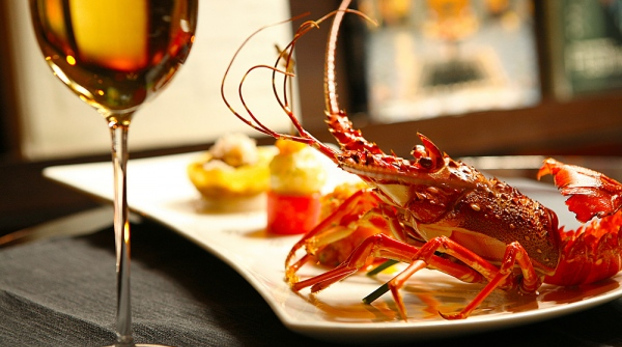There is a lot to be said when matching wines to Malaysian cuisine. The different flavours and wine components should compliment the ingredients of the dish. Wine components to watch for is the type of body, level of acidity (the degree of tannins in red wine) and the amount of residual sugar.
First, we look at the two tpes of wine – white and red:
White wines from cool-macroclimates like Northern France, Germany, Austria, New Zealand, North Italy and cooler parts of Australia achieve higher levels of acidity and are light body; while white wine from warmer zones like South Italy, Argentina or Spain, berries attain higher sugars, increasing the wines to medium body.
Red wines from warm-macroclimates like Spain, Chile, South Australia, South Italy, South Africa, Argentina and Southern France, berries develop higher sugars, producing wines with medium plus to full body. But black grapes cultivated in cooler climate like Pinot Noir in Burgundy, France and Spatburgunder in Austria, sugars drop and the acidity increases. These wines are often light to medium body.
My theory is simple, light body wines match light food and medium plus to full body wines match rich food.
 Asian starters
Asian starters
A white wine to try with crisp, dry, high acidity, steely lemons, pink grapefruit and white peach is the elegant Gruner Vetliner from Austria. It is delicious and easily matched with Asian starters like popiah, lobak and rojak or Japanese sushi. Producers like Huber (as shown on the left), Schloss Gobelsburg and Prager come highly recommended.
Chinese food
White Wooded Chardonnay having spent some time in oak barrels, offer better pairing with Chinese food if compared to unwooded Chardonnay. It tastes of ripe apples, melon and pineapple, is off-dry and with medium plus body. Asian dishes like egg-springrolls, prawn dumplings, carrot-cake and char-kway-teow with cockles match well.
 Food with “wok hei”
Food with “wok hei”
For Wooded Chardonnay pairings to Asian food with “wok hei” (heavily fried food), try producers from South Africa with warmer climate such as Bellingham or Springfield Estate. Alternatives are South Africa flagship white grape Chenin Blanc (off-dry) or Riesling (as show on the left) from Germany or Australia. These are aromatic wines that cut well into chilli. For a sweeter touch, try Moscato d'Asti from Italy.
Food with chilli
For food with spicy chilli, the white grape Sauvignon Blanc tops the match. Choose wines from either cool New Zealand or warm Chile (where typical grassy notes gain more aroma but reduced acidity) that can easily match to a bowl of laksa, nasi lemak or chicken rice!
Heavy dishes
For heavy dishes like beef rendang, Korean spicy noodles, murtabak or curry-noodles, blended red wines do well. Try Australian Shiraz/Cabernet Sauvignon or Merlot/Cabernet Sauvignon.
For the more adventurous
For the more adventurous pairer, Spanish wines with Tempranillo, the black flagship country grape blended with Garnacha Tinta, Mazuelo and Graciano, aged in oak barrels offers ripe red fruits, coffee, cocao, touch of spice and leather. This is a good alternative to Shiraz. Or another favourite, Chile's signature black grape, Carmenera. Deep purple-red, rich in black-berry and black pepper, pleasing and easy-match to Indian curries or roti-canai with beef and lamb .
If you are not into hot food, how about mee rebus with Pinot Noir?
There are no rules for food and wine pairing, the best match is what pleases your palate and captures the moment.
Pervious article > How to choose rosé wine

Manjit Tabitha is a certified Wine & Spirits Educator with AIWS, Awards in Wines & Spirits, from WSET UK. She returned from London to Malaysia to spread the joy of wines, with educational and wine events. She is currently perusing her Level 5 Honors in Wines of Asia, and intends to continue with the Masters of Wine, a rigorous paper at the highest wine level. You can get in touch with the writer by emailing her at asktabs@gmail.com.
